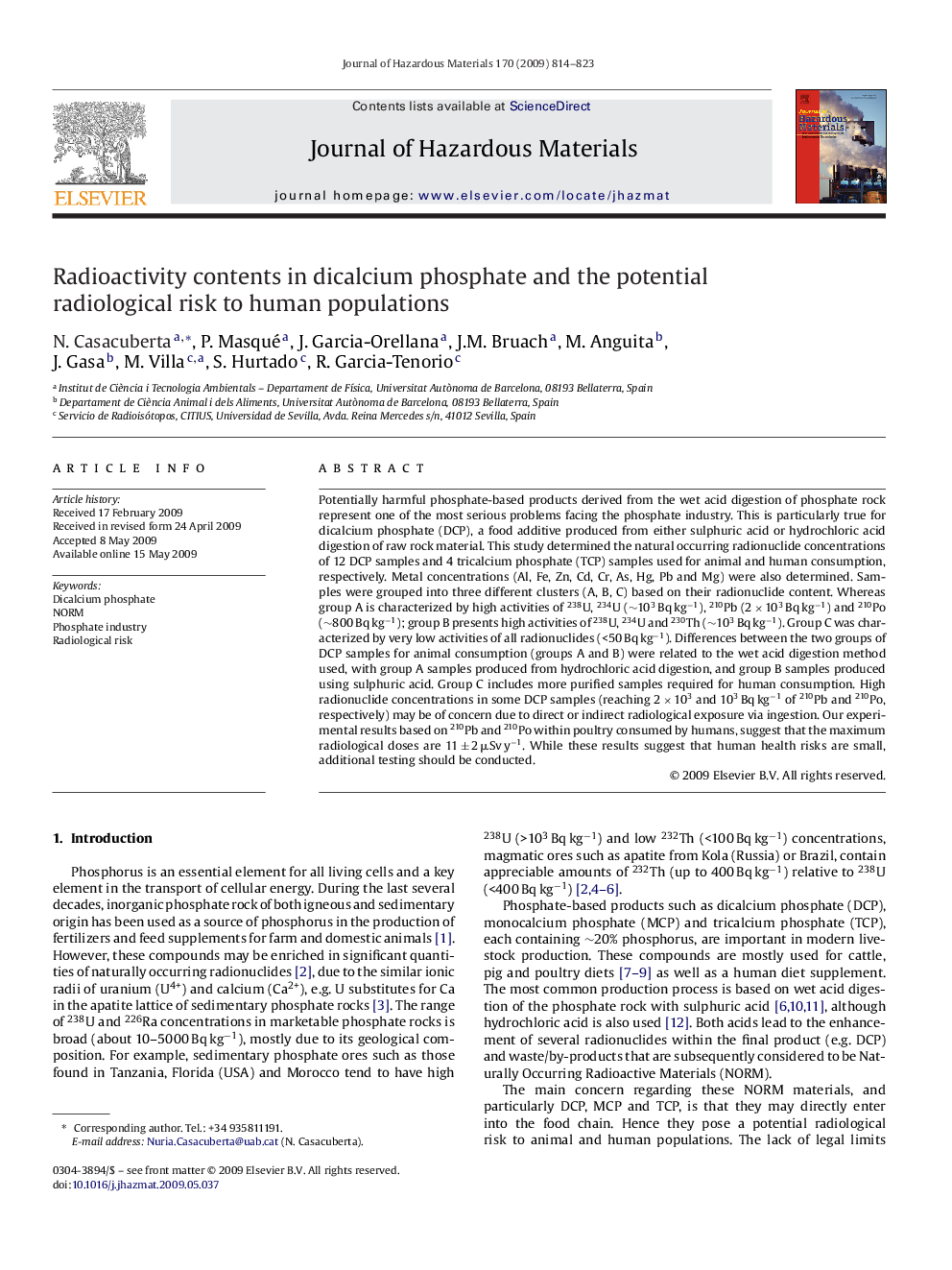| کد مقاله | کد نشریه | سال انتشار | مقاله انگلیسی | نسخه تمام متن |
|---|---|---|---|---|
| 581239 | 1453158 | 2009 | 10 صفحه PDF | دانلود رایگان |
عنوان انگلیسی مقاله ISI
Radioactivity contents in dicalcium phosphate and the potential radiological risk to human populations
دانلود مقاله + سفارش ترجمه
دانلود مقاله ISI انگلیسی
رایگان برای ایرانیان
کلمات کلیدی
موضوعات مرتبط
مهندسی و علوم پایه
مهندسی شیمی
بهداشت و امنیت شیمی
پیش نمایش صفحه اول مقاله

چکیده انگلیسی
Potentially harmful phosphate-based products derived from the wet acid digestion of phosphate rock represent one of the most serious problems facing the phosphate industry. This is particularly true for dicalcium phosphate (DCP), a food additive produced from either sulphuric acid or hydrochloric acid digestion of raw rock material. This study determined the natural occurring radionuclide concentrations of 12 DCP samples and 4 tricalcium phosphate (TCP) samples used for animal and human consumption, respectively. Metal concentrations (Al, Fe, Zn, Cd, Cr, As, Hg, Pb and Mg) were also determined. Samples were grouped into three different clusters (A, B, C) based on their radionuclide content. Whereas group A is characterized by high activities of 238U, 234U (â¼103 Bq kgâ1), 210Pb (2 Ã 103 Bq kgâ1) and 210Po (â¼800 Bq kgâ1); group B presents high activities of 238U, 234U and 230Th (â¼103 Bq kgâ1). Group C was characterized by very low activities of all radionuclides (<50 Bq kgâ1). Differences between the two groups of DCP samples for animal consumption (groups A and B) were related to the wet acid digestion method used, with group A samples produced from hydrochloric acid digestion, and group B samples produced using sulphuric acid. Group C includes more purified samples required for human consumption. High radionuclide concentrations in some DCP samples (reaching 2 Ã 103 and 103 Bq kgâ1 of 210Pb and 210Po, respectively) may be of concern due to direct or indirect radiological exposure via ingestion. Our experimental results based on 210Pb and 210Po within poultry consumed by humans, suggest that the maximum radiological doses are 11 ± 2 μSv yâ1. While these results suggest that human health risks are small, additional testing should be conducted.
ناشر
Database: Elsevier - ScienceDirect (ساینس دایرکت)
Journal: Journal of Hazardous Materials - Volume 170, Issues 2â3, 30 October 2009, Pages 814-823
Journal: Journal of Hazardous Materials - Volume 170, Issues 2â3, 30 October 2009, Pages 814-823
نویسندگان
N. Casacuberta, P. Masqué, J. Garcia-Orellana, J.M. Bruach, M. Anguita, J. Gasa, M. Villa, S. Hurtado, R. Garcia-Tenorio,